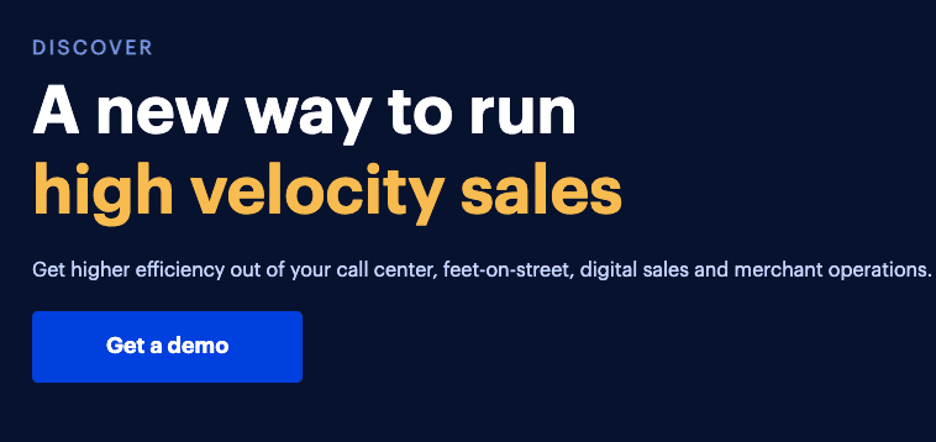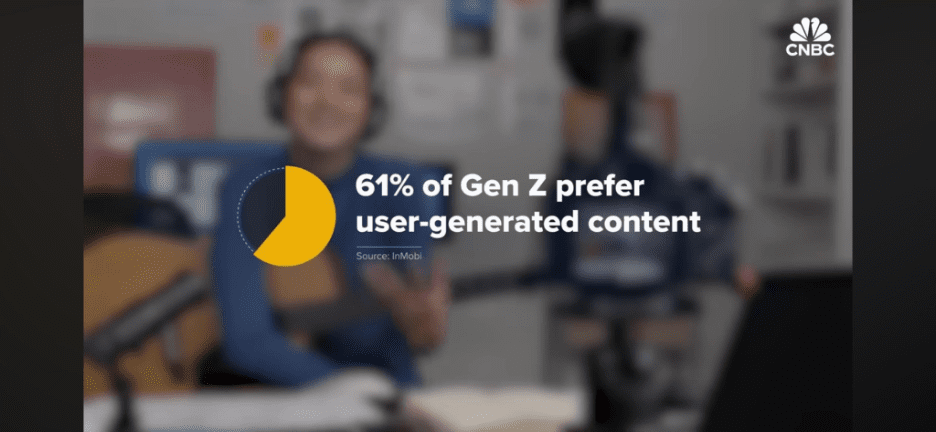Balancing brand and performance marketing has nothing to do with giving each side its amount of time in the limelight.
There’s no magic harmony you’re going to create that delivers some sort of marketing tactic equilibrium and equality.
This is the most controversial article I have ever written. A lot of people reading this will not be happy about what I have to say. For the record, there’s a bit of irony in this, considering I have said way more controversial things about marketing and SEO in the past.
Yet, here we are as I am about to tell you that the only way to balance brand and performance marketing is to give brand supremacy.
Let the fireworks begin.
Balance Brand & Performance Marketing? Why Is There Even A Problem?
In keeping with espousing heresy I will not start this post with “What is brand marketing?” and/or “What is performance marketing?” nor will I dive right into how to balance the two.
Instead, I’m going to challenge the very premise of the article so that you can better understand why this question is even worth your time.
While I see the problem as basically being self-evident, let’s flush it out a bit. The way I see it, there are two fundamental issues at play here (there are more, but this post is going to be long enough as it is):
1. Mindset
The mindset required for good brand marketing is, at times, lightyears away from the performance mindset.
I’m not saying that they intrinsically have to be this way. As I’ll get into later, I think the two ways of thinking complement each other.
However, at the risk of generalizing, there does tend to be a strong divergence between how the two types of marketers think. At least, this has been my experience over the past decade or so as someone who straddles both marketing disciplines.
I often find performance marketers very focused on the immediate. What’s bringing traffic right now, and how do we get more of it?
For the record, that’s not necessarily a bad thing. Nor is it unreasonable (I mean, it is, but it’s not).
This hyperfocus on immediate performance metrics is quite logical since performance marketers are graded on immediate ROI. Is it thus any surprise they focus on the immediate? (So, performance marketers, it’s not you…it’s the system.)
Brand has an entirely different goal. With brand building, the focus is on exactly that: building. Building an identity, associations and sentiment, messaging, positioning, etc.
All of that takes time. You don’t immediately leave an imprint on someone. If you want to create an impression with an audience, it’s pretty obvious it’s going to take time.
This process is also far more compounded and less linear than performance marketing is often perceived. It’s not like getting a page to rank well and driving in traffic who will convert.
You’re creating a reputation for yourself that involves micro-moments and micro-activities compounding over an extended period (like how any association is formed).
(For what it’s worth, I would argue that performance-based activities, such as SEO, also compound over time. You’re not going to rank for that meaty keyword on day one).
Brand marketing naturally lends itself to a bit more of a holistic long-term mindset whereas performance-based marketing lends itself to focusing more on the immediate impact of a given activity.
These divergent mindsets make it entirely difficult to properly balance brand and performance. They’re almost at war with each other.
To sum it all up: Performance marketing (to its detriment) looks at the end result and often doesn’t care about context, environment, and ecosystems. Brand, on the other hand, is all about contextualization and understanding the environment and ecosystem the brand is operating within.
Now, you might be thinking, well a lot of brand marketers also seem to care less about context, environment, and ecosystems and generally operate in the here and now much like a performance marketer might.
Which brings me to my next point.
2. Misunderstanding What Brand Is
Part of what makes balancing brand and performance marketing almost an inherent difficulty is the lack of understanding of what “brand” actually is.
Too often, what we call “brand marketing” is really performance or product marketing disguised as brand marketing.
What happens is that a company will put emphasis on brand when in reality it’s just another form of performance marketing. The net result is a lack of balance but without even realizing it.
Imagine a TV commercial that doesn’t have a message or any positioning but rather simply tells you what the product is and what it does. Is this brand marketing? I say no. This is just product marketing. It’s pure product awareness.
The web is filled with the equivalent of this.
You talking about your product or service across the internet is not brand marketing; it’s product marketing.
Brand marketing is entirely about who you are in the context of who your audience is and how you want to then be perceived. It is fundamentally associative. If it’s not associative, it’s probably not genuine brand marketing. That is a hot take right there.
Branding is about putting yourself in a position to grow; it is not growth per se. If brand marketing were farming, it wouldn’t even be planting the seeds; it would be sowing the soil so that you could eventually plant the seeds.
Brand is concerned with perception and momentum, not adoption. I know that sounds crazy, and half of y’all out there on both the brand and performance side of marketing are shaking your heads, if not your fists, right now.
But it is the truth. Real brand marketing, the kind you see the Cokes and Lexuses of the world doing, is about perception that leads to momentum. It’s about putting you in a position to grow and to have opportunities that you can capitalize on.
How Do You Then Balance Brand And Performance?
Brand is the setup for performance. Brand creates the opportunity, and performance captures it.
It’s all one dance.
Allow me to explain.
Brand Is Primary, And Here’s Why
Balancing performance and brand marketing isn’t about some sort of give-and-take between the two approaches. If you’re thinking about balance in terms of scales, that’s not how this is going to work.
It’s about knowing where each discipline sits in the “marketing hierarchy” and how the two interact.
This is why I am telling you brand is primary – and it’s not even close.
There are two fundamental ways brand is primary to performance marketing (I was going to insert another, but I think for now these two are the most important):
The Ultimate Goal Is To Have People Come To You
Brand is primary in the very goal it sets out to achieve – to bring audiences to you (as opposed to you chasing your audience across social and search screaming “Pick me! Pick me!”).
It’s like the old line from the Cheers theme song, “You wanna go where everybody knows your name.” No one wrote a line in a sitcom theme song that said, “You wanna go chasing everyone around the block screaming like a mad person so that they will know your name.”
Consumers knowing who you are and seeking you out is self-evidently more advantageous than trying to chase after your consumer base and hoping to heaven you found them at the right moment in the buyer journey.
In case it’s not entirely self-evident (because I have heard performance marketers say the complete opposite), people coming to you creates more momentum and opens up new revenue possibilities than the inverse ever could.
Buzz is contagious. I’m not saying you need to go viral or anything like that, but creating momentum naturally leads to more momentum. The momentum your brand creates for itself leads to all sorts of new possibilities.
Being sought after on whatever level builds upon itself. If done with care and patience it can create real stable opportunity growth for you. This is really what any serious company wants: long-term stable growth. Nothing is more long-term and more stable than being sought after and enticing.
Serious connections with your audience are hard to create but they are hard to really break as well.
Unless you become a known quantity in your niche, no amount of performance marketing is going to help you achieve what you really want: self-sustained staying power.
Brand helps fulfill the ultimate goal any company has: to be a market leader.
Brand Is What Allows Performance To Perform
Can pure performance marketing perform (for lack of a better word)? Yes, obviously.
Can it reach its true potential without brand? No.
Brand marketing is what creates the willingness to invest and interact with your performance marketing.
Imagine you’re on a train, and some random goofball starts waving at you. Are you gonna wave back? And even if you do, are you really interested in interacting with this person?
Now imagine instead that some random whacko your friend sees you on the train and waves. Would you wave back? Wave? You might go on mosy over and have an actual conversation.
Performance without brand is randomly waving at people and hoping that they converse with you. Sometimes they might, but you’re fighting an uphill battle.
Creating a connection with your audience that exists beyond utility is what enables your performance marketing to perform the way you want it to.
To use an SEO analogy, trying to get your product or service to perform without brand is like trying to get a single page on a new website to rank for a highly competitive keyword without any other content history to support it.
Effectively establishing your brand is what enables you to make the pitch that can covert at the appropriate time.
That’s why I would say 99% of brand marketing is not about trying to build revenue. It’s about building the possibility of building revenue. It’s about building cadence and momentum so that the part of your marketing that asks folks to open their wallets works.
Brand puts you on the doorstep of performance. In effect, brand creates the lead, and performance signs the deal.
Like I said earlier, if marketing were a farm, then branding wouldn’t even be planting the seeds. It would be sowing the ground so that you could plant them. And like a field, if you don’t sow it first, you will not have a crop.
If you want revenue without fighting an uphill battle, you have to realize that brand is primary. It is what allows your other marketing activity to perform as you really want it to.
This goes back to what I was saying earlier about people not understanding what brand is.
As far-out as it sounds, brand is not about revenue, it’s about building the opportunities that will eventually lead to revenue. Understanding this one point puts you so far ahead of everyone else.
The Problems In Giving Performance Primacy In A Balanced Approach
Let’s take this from the other side of the coin. What would happen if you gave performance primacy, not brand?
If performance is the building block of the marketing strategy you’re setting yourself up for significant problems down the road.
There are more than a few reasons why this is true, here are some of the more notable ones:
Performance First Means Working With Your Hands Tied Behind Your Back
I don’t even know where to start with this one because a performance-first mindset limits you in so many ways.
Broadly speaking, performance being primary, as I mentioned earlier, means fighting an uphill battle. You’re constantly trying to find the right audience at the right time and then convincing them to funnel through.
Yes, you can get to a good place that way but it’s never really working on its own for you. You never really become a “thing” this way and can’t naturally build momentum upon your activities the same way.
Again, a) I spoke about this at length above b) I am sure you will find me a case where I am wrong – that’s not my point.
On top of that, performance generally tends to be siloed – an obvious inefficiency. Link builders do link building, PPC does paid, etc. – there’s a general lack of broader strategy and comms when performance takes the lead.
Each team has its own KPIs and does whatever it takes to meet them, resulting in obvious inefficiency.
Performance Will Pigeon-hole You Every Time
Because performance marketing is very here-and-now, it generally lacks the flexibility to build for the future.
Doing what’s best for the KPIs is too often doing what’s best in the immediate only.
That means a lack of flexibility in both structure and activity.
I’ll give you a great example of what I mean when I say performance limits a business structurally.
While this case may sound “far-fetched” today, SEOs who have been around a while will search their feelings for they know what I am about to say to be true.
Back in the day, if I had a site that sold DVDs, “the SEO play” would be to name the site “buydvds.com,” or whatever.
It’s generally not a good idea to name your brand after a specific tech asset as, well, tech assets change. In this case, DVDs are basically defunct.
Now the business here may have pivoted to streaming media but now has to deal with a whole rebrand (including a site migration) and all of the immense headaches that come with it. What they should have done at the onset was name the site something like “entertainmentmedia.com” or whatever.
Why didn’t they? Because the performance play became primary, and the brand play was discarded.
Performance, by its very nature, lacks breadth and as a result, will often limit the scope of how the business is able to function or structure itself.
The other way performance limits a business relates directly to the marketing activities performance signs off on and doesn’t sign off on.
Now, if you think I’ve been a bit salty thus far…hold my beer.
What performance-based marketing does to overall marketing activities is the equivalent of a marathon runner deciding to amputate their foot mid-race while maintaining the expectation to break a world record.
To see this in action, look no further than what happens when performance owns a content strategy.
What is the value of content in the context of performance? Impressions, clicks, traffic, conversions, etc.
You see this all the time in the SEO space. You can’t go a week without seeing someone somewhere ask, “If a keyword has 0 search volume should I bother writing content for it?”
Every time I see this question, a piece of me dies.
Not because it might not be true. There might not be a ton of search volume but because that’s a not reason not to write a piece of content.
Leave aside the fact that your current users may expect that content to be there on your site, it could signal the same expectation to new consumers hitting the site for the first time. Also, content is a corpus. You have to build it up to the point where you can write that post for that money keyword.
Performance marketing never asks, “What does writing this content allow me to do next?”
Instead, it’s always, “Why does this content do for me right now?”
Pigeon-holed.
Folks Might Use You, But They Also Might Hate You (And Is That What You Really Aim To Do?)
My sister recently told me how she’s so reliant on Amazon but hates using them at the same time due to how they allegedly treat their workers.
It’s entirely possible that folks may consume your offering but will not be fond of you when doing so. It’s also almost certain that your brand can’t get away with it the way Amazon can.
If all you’re thinking about is traffic KPIs and conversions, etc., you’re missing the most fundamental aspect of success – likability.
It doesn’t even have to be so extreme. Look at the oversaturation of content between Marvel and Star Wars (and even my personal favorite, HBO’s Hard Knocks NFL documentary series).
Sure, they get viewers, but it all comes with negative sentiment. While the end product of Hard Knock’s new preseason series was actually not bad, New York sports radio (the series featured a New York team) trounced HBO before its release.
For a week, every sports host was basically shaking their heads at the idea of having to watch a whole series about phone calls between General Managers making trades, etc. So HBO got the numbers but accumulated a lot of brand baggage to do it.
How smart is that as a long-term strategy?
That’s, fundamentally, a testimony to the fact that brand can assess a move qualitatively while performance just can’t.
That’s not to say performance’s quantitative measurement isn’t vital. It’s a very important part of this brand balancing act.
If Brand Builds, Then Performance Course Corrects
I don’t want you to walk away thinking that performance marketing doesn’t hold value. This article isn’t about brand being better. It’s about the balance.
Brand needs performance to leverage its full power, just like performance needs brand. Again, brand can set you up, but performance closes the deal. Brand, for example, can set up a business to have the authority it needs to pull in organic traffic.
But you need a genuine SEO strategy that includes things like keyword targeting, etc. In this specific case, a performance-based mindset is what will take the brand from potentiality to actuality.
Very often, brand course corrections should be based on the data performance marketing provides.
If there’s a drop in whatever KPI whether it be sign-ups or traffic or whatever, it’s often a change in brand and business strategy that’s needed. That change can’t occur unless you have the data insights performance marketing provides.
Take Starbucks. At the time of this writing, they’ve seen a decline in business, and there are multiple reasons for it. What I found interesting was the user sentiment towards Starbucks’ “corporate identity.”
In an interview with CBS, one customer said, “Starbucks started really feeling like corporate America in a way it hadn’t before.”
If I were Starbucks, I would at least explore the idea of creating a sub brand that is more niche and local. Much the way the beer companies did when they saw craft beer sales surge (hence Coors created Blue Moon).
That sort of shift in brand strategy can’t possibly occur without the insights offered by performance marketing. You have to have sound performance marketing processes in place to effectively run your brand marketing.
So when I say brand is “primary,” I mean that in the sense of the stages of marketing thought and activity.
Not necessarily importance (I do think brand is fundamentally more important, but that’s, again, not what this post is about). You literally have to balance (maybe integrate is a better word) performance into your brand marketing in order to be effective.
Can’t Performance Build Up The Brand?
Doing this is like trying to pull a whale through a needle hole.
Yeah, I guess it might be technically possible, and someone out there did it – but it is not the norm. Upon considering this, I am sure no one has pulled a whale through a needle hole, but I think you get my point.
You are trying to build up a tidal wave one raindrop at a time. Yes, it is possible, but it goes against the very foundation of what you’re trying to actually do – gain momentum.
I’ve heard the argument that by ranking for this and that query and everything in between, you will become an established presence – a brand.
That can be possible. And yes, your content strategy (SEO and beyond) is a big part of your brand strategy. But thinking about something like Google Search as being the method to establish a brand reputation is a chaotic way to go about building a brand.
To start, Search isn’t a medium where your audience may even be interested in “hearing from you.” They may have a specific need at a specific moment that brings them to search. Once that need is met does the user really care to explore more about your product or service? It’s a toss-up at best.
It’s like trying to have a conversation with someone in the middle of a lecture – it’s just not conducive.
You want to have a conversation and make a connection in a place and time that is meant to have a conversation and connection (social media, YouTube, live events, etc.).
Using something like Search to establish a distinctly recognizable brand is just not what Search is.
SEO and search engines are a great way to supplement and reinforce the messaging and positioning you establish on more suitable platforms.
If a consumer sees you on social and interacts with you over time and then goes to search and keeps seeing your results pop up it can reinforce your positioning. It may even make it likely to get a conversation out of it.
What makes performance hard in terms of it being the method to establish a brand is that the assets usually associated with it (PPC, SEO, etc.) are secondary branding assets in the context of how users discover them.
They can supplement, accent, and reinforce, but they are not designed to be primarily effective at establishing a brand identity and audience connection.
Think of it like the difference between someone specifically coming to your blog after interacting with your brand for years on social versus someone who finds a single post on Google.
Yes, they both might read the same content but in the latter case, there is no identity contextualization. They don’t know who you are and how that post fits in with your overall identity and positioning. They get the information in the post but in terms of getting “you,” it’s not very direct.
The way the audience interacts with your brand via performance marketing activity is far too limited and narrow in scope for identity contextualization to easily take place.
So it can happen, and it does happen a bit each time that person interacts with your content (say via search), but it’s piecemeal and disjointed.
Better Balance Means Better Marketing
Balancing brand and performance means knowing the role and place of each marketing discipline. It means allowing the two areas to interact and influence each other at the right time and in the right way.
While it all starts with branding at the onset, the relationship between the two areas of marketing should grow to be reciprocal. Brand should open the doors for performance and performance should help the brand evolve.
For too long, the digital marketing space has siloed these two areas, with inefficiency (and more) being the net result.
The future of marketing is being able to unite these two concepts effectively. I think there is a lack of attention given to how brand impacts performance efficacy (and vice versa).
Uniting the two areas of marketing will better align with where the web and its user base are headed.
More resources:
Featured Image: Jack_the_sparow/Shutterstock













